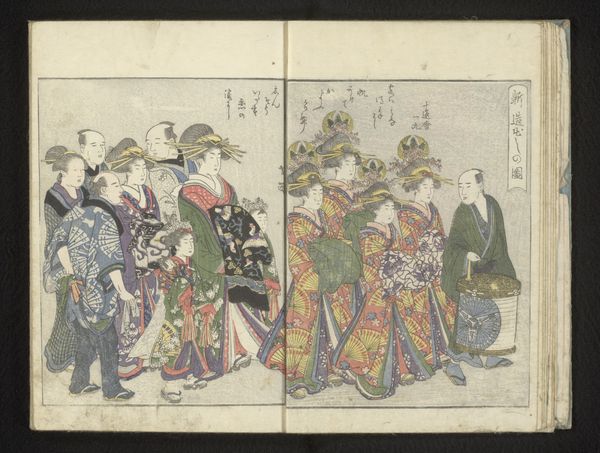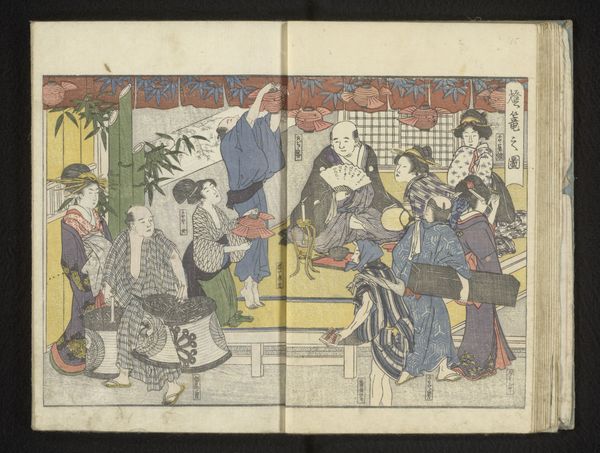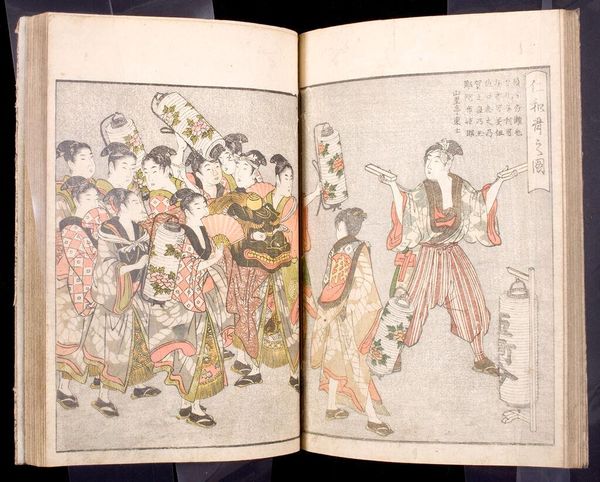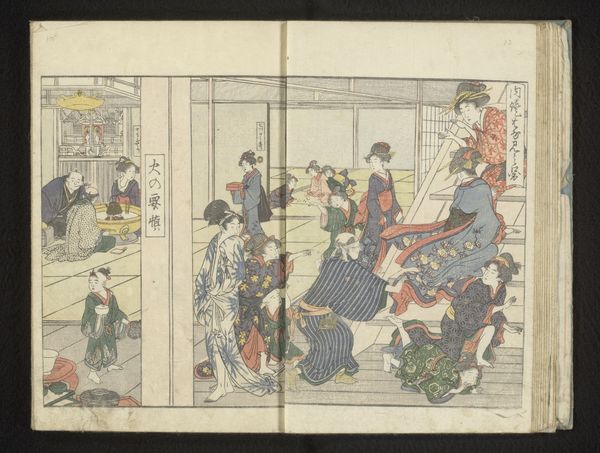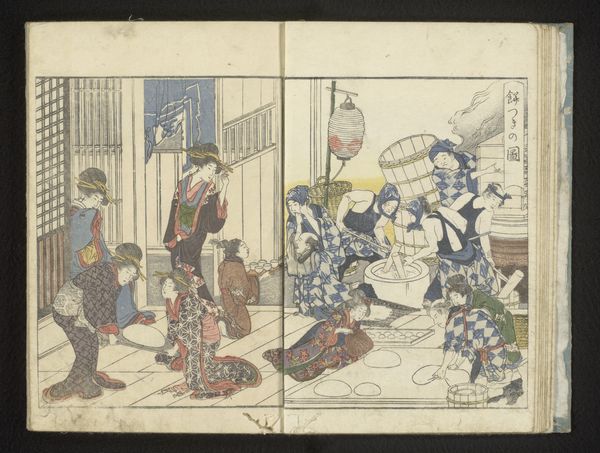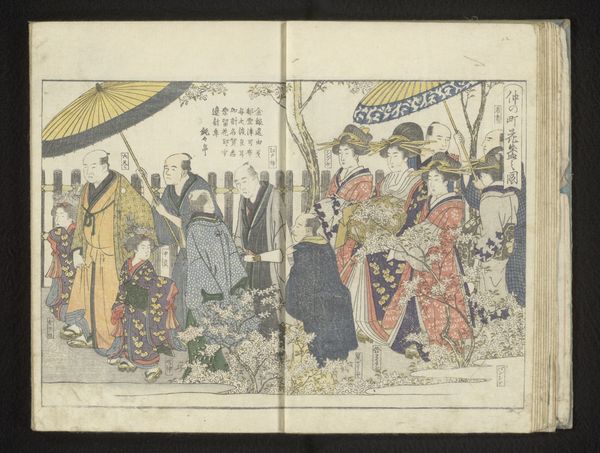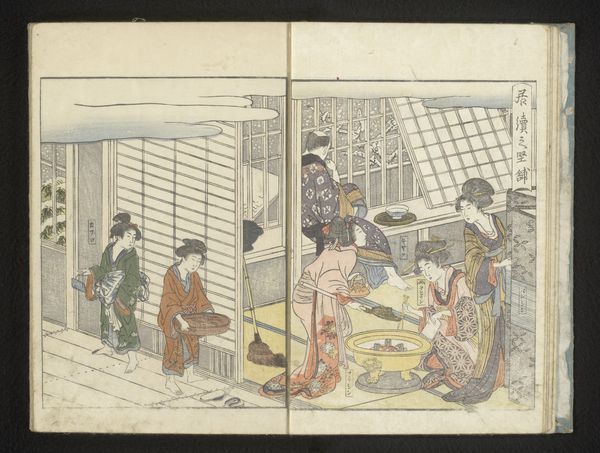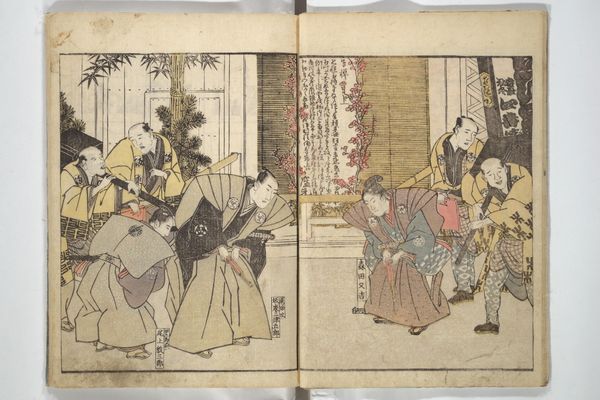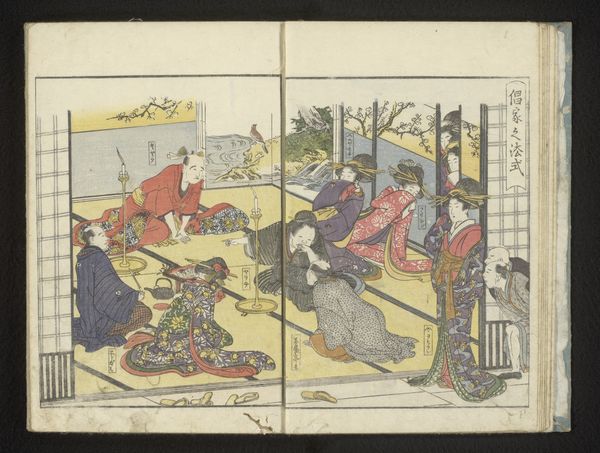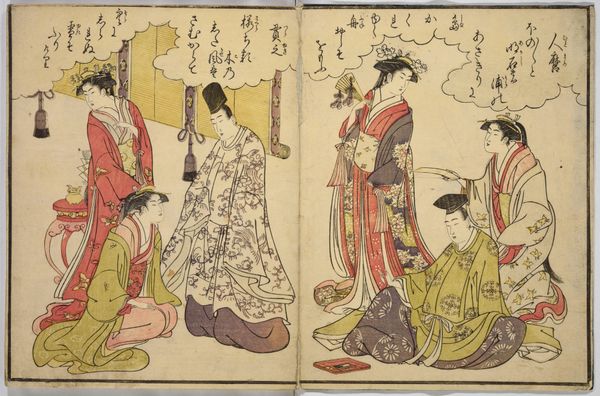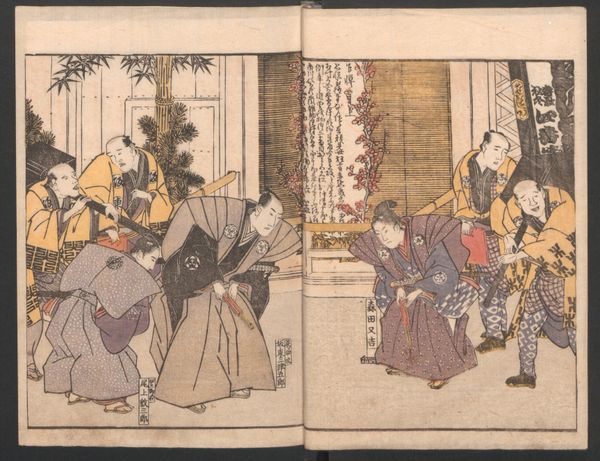
print, woodblock-print
#
portrait
#
narrative-art
# print
#
asian-art
#
ukiyo-e
#
woodblock-print
#
genre-painting
Dimensions: height 224 mm, width 158 mm
Copyright: Rijks Museum: Open Domain
Curator: Here we have Kitagawa Utamaro’s “Procession with Lion Head and Lanterns,” dating from 1804. This woodblock print resides here at the Rijksmuseum, a superb example of ukiyo-e. Editor: My immediate reaction is the density of figures, almost overwhelming! The texture from the printmaking is palpable, like looking at patterned cloth. Curator: Indeed. Utamaro was known for his attention to the working-class culture and is masterful at capturing the dynamism of urban life. The print showcases a festival procession, likely associated with a local shrine or temple. We can imagine the sights and sounds filling the streets. Editor: What interests me is the physicality of the lanterns themselves. The way the light glows through paper—handmade paper, no doubt. You can see the makers' marks if you look closely. Their shapes feel quite robust against the ethereal nature of the print's palette. Curator: The choice to include the lanterns and the lion's head as central components does suggest the significance of popular religion. Ukiyo-e prints such as this were created and consumed in large numbers by the common people. It is also an expression of local civic identity. Editor: I am struck by how many individuals must have touched this work. From the artist creating the original sketch to the artisans carving the blocks to the printers applying the ink to the people buying and trading the images…it reveals how making and distribution processes played important roles in everyday life. Curator: Precisely. Understanding the social mechanisms of art and distribution at this time can provide incredible insight into societal trends and collective aspirations. Utamaro captured this brilliantly. Editor: Seeing the human imprint through craft and material culture in this print enriches our understanding, moving past simple representation towards something lived and experienced. Curator: Absolutely, and placing it within the cultural history illuminates a more intricate understanding of 19th-century Japanese society. Editor: Considering it through a lens of materials and labor allows us to more richly comprehend the social impact of this remarkable print.
Comments
No comments
Be the first to comment and join the conversation on the ultimate creative platform.
